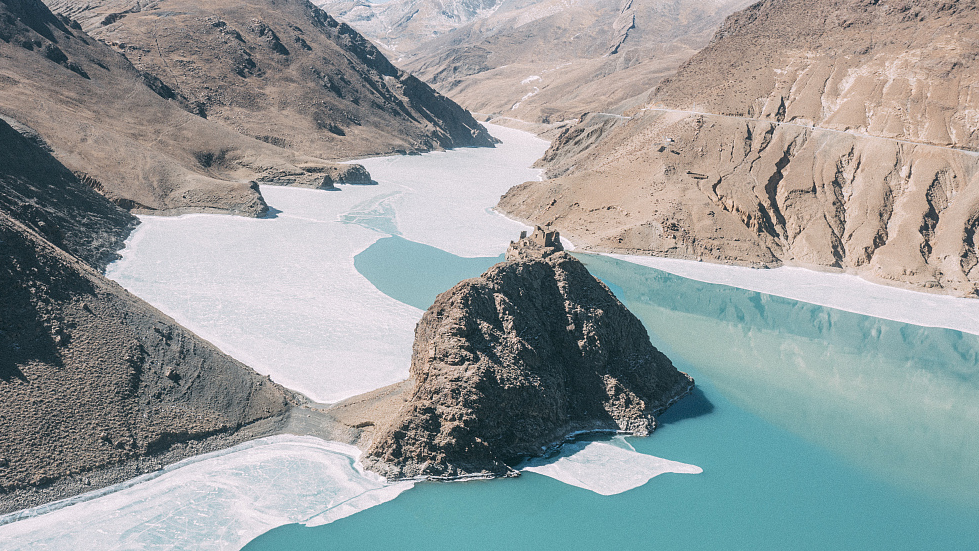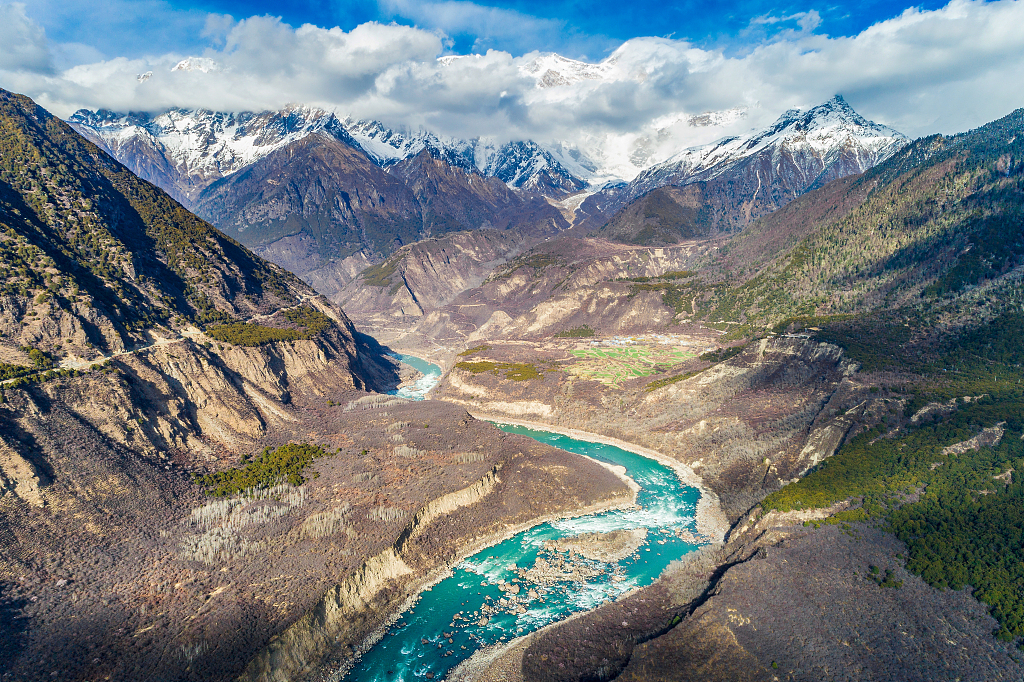From June 20 to 29, the second Qinghai-Xizang scientific research team, composed of several top international scientists, arrived at the Shigatse section of the Yarlung Zangbo River, located in southwest China's Xizang Autonomous Region, to investigate the geological evolution, geomorphology, ecology and environmental evolution of the relevant river valleys in order to focus on the important scientific issue of the evolution of the river and the ecological environment changes of the river basin.

Scenery of the Shigatse Reach of the Yarlung Zangbo River in Xizang Autonomous Region, southwest China. /VCG
Scenery of the Shigatse Reach of the Yarlung Zangbo River in Xizang Autonomous Region, southwest China. /VCG
The Yarlung Zangbo River is one of the highest rivers in the world. In the Shigatse Reach of the Yarlung Zangbo River, the international scientific expedition team conducted a nine-day investigation. They launched a series of research tasks on the river's suture zone, the pre-arc basin and the typical valley sand dune landform, covering the genetic types of rocks, the analysis of the sedimentary environment and the process of river sediment transport, which have reached a lot of important consensus on the geological evolution history of the southern Qinghai-Xizang Plateau. The team pointed out that the formation and evolution of the Yarlung Zangbo River are closely related to the geological evolution since the Cenozoic collision between India and Eurasia.

Aerial picture of Yarlung Zangbo River. /VCG
Aerial picture of Yarlung Zangbo River. /VCG
According to Wang Chengshan, a professor at the China University of Geosciences, the site research helped the team have a preliminary understanding that the desertification of the Yarlung Zangbo River may be caused by the evolution of the whole river valley and the superposition of glacier melting. This is the preliminary result they came up with.
In addition to the geological research, the foreign scientists also visited locals to learn about the development of Xizang's economy, society and technology. They look forward to further in-depth cooperation with Chinese scientists in the fields of evolution of the Qinghai-Xizang Plateau and eco-environmental protection, so as to contribute to the promotion of global scientific and technological progress and regional sustainable development.
(If you have specific expertise and want to contribute, or if you have a topic of interest that you'd like to share with us, please email us at nature@cgtn.com.)